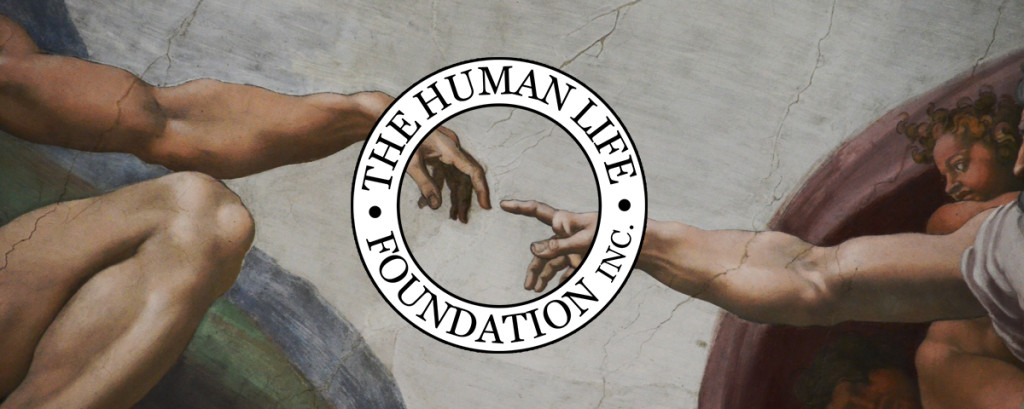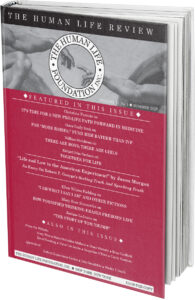A Sign(ature) of Our Times
My father had a signature to rival John Hancock’s. The “J” of his “John” was just as intricate and imposing as the well-known one on the Declaration of Independence. And the “f” in his “Caulfield” was a unique series of sharp-edged, back-and-forth strokes that I could never quite master. But try I did to match that signature—over and over again when I was ten years old—because it was a hallmark of maturity, a rite of passage, to move from childish handwriting to adult script. Signing his name was a mark of a man’s character, an expression of his authority, something that a father could proudly teach his son.
Under my dad’s guidance I developed my own signature style in a hand that has signed increasingly more important documents over the years, from bank accounts, to checks, to mortgage and other financial agreements, to certificates of authenticity of the relics of Blessed Michael McGivney, whose cause for sainthood I currently serve.
Yet the generational ritual of styling a signature has been swept away in our digital world. I tried to teach my two sons the practice, showing them how I signed my name and urging them to write their own with precision and pride. But even as middle-schoolers, they sensed, in a way I did not, that this was a dying art. They were already experienced laptop typists, and their Catholic school stopped teaching penmanship in sixth grade. Signatures seemed old school to them, and I was a neanderthal to insist on their importance.
For me, it has been an uphill climb against the cultural and business practices of our day.
At first, we were asked to sign with a blunt pen attached to a card-scanning screen. Then came the even more ridiculous finger-signing screens, some of them not even displaying your scrawl. “This looks nothing like my real signature,” I would complain to the heedless cashier. “Is anyone comparing this to the way I signed the back of my credit card?” Though all my cherished standards of personal and professional behavior are being undermined, I have decided that this is not a hill to die on. So, I scribble my name with a fingernail and move on. It’s the way of the world and resistance is useless.
The final insult came with the recent sale of our house in Connecticut, when my wife and I were introduced to a whole new level of remote—or, more accurately, robotic—signing. After meeting in person with our very capable real estate agent, we started receiving emails titled “Documents to Sign.” I opened the documents and innocently began to read every word of every numbered article but kept getting interrupted by a pop-up asking me to choose a signature. I already have a signature, I thought, as I clicked out of the pop-up and continued doing what I always thought contracts were for—reading, understanding, and consenting—or not. But after the fourth pop-up, I called the agent and asked what it meant when it asked me to choose a signature. “I haven’t finished reading the document and it wants me to sign something? Have I been hacked?”
A savvy yet understanding 30-something gentleman, the agent said that after reading and accepting the terms of his service expressed in the document, I should create a signature of my own (with my finger!) or choose one of the signatures offered by the document. Always suspicious (but not paranoid!), I asked how the document knows my name well enough to forge my signature. Yes, I know, I try everyone’s patience in this digital, get-it-done, speed-of-light world of transactions. Poor Nick listened patiently as I related the story of my father overseeing the drafting of my first signature 58 years ago, and the pride I had in signing my first savings bank account card, which was filed in a drawer at my local bank to be checked every time I tried to cash a check there.
Luckily, my wife was within earshot and called out, “Did you sign yet?” She had gotten the same email and documents. Evidently, we could sign separately, and the trademarked software would cull the signatures and place them in the correct spots on a final document to be emailed to each of us.
Somehow, despite dark forebodings, I have survived the process as we have gone on to electronically sign agreements with buyers, sales reps of the house we’re moving to, mortgage agents, insurance companies, and various public utilities. Still, I imagine a Network-style revolt taking shape in the form of a million fed-up folks marching to their banks, lenders, lawyers, and sales agents, armed with fountain pens and yelling, “We’re not going to take it anymore! We will sign our own names in our own hands, on real paper to be filed in your cabinets and vaults!”
That is, if they can find the relevant street addresses on the company websites.









